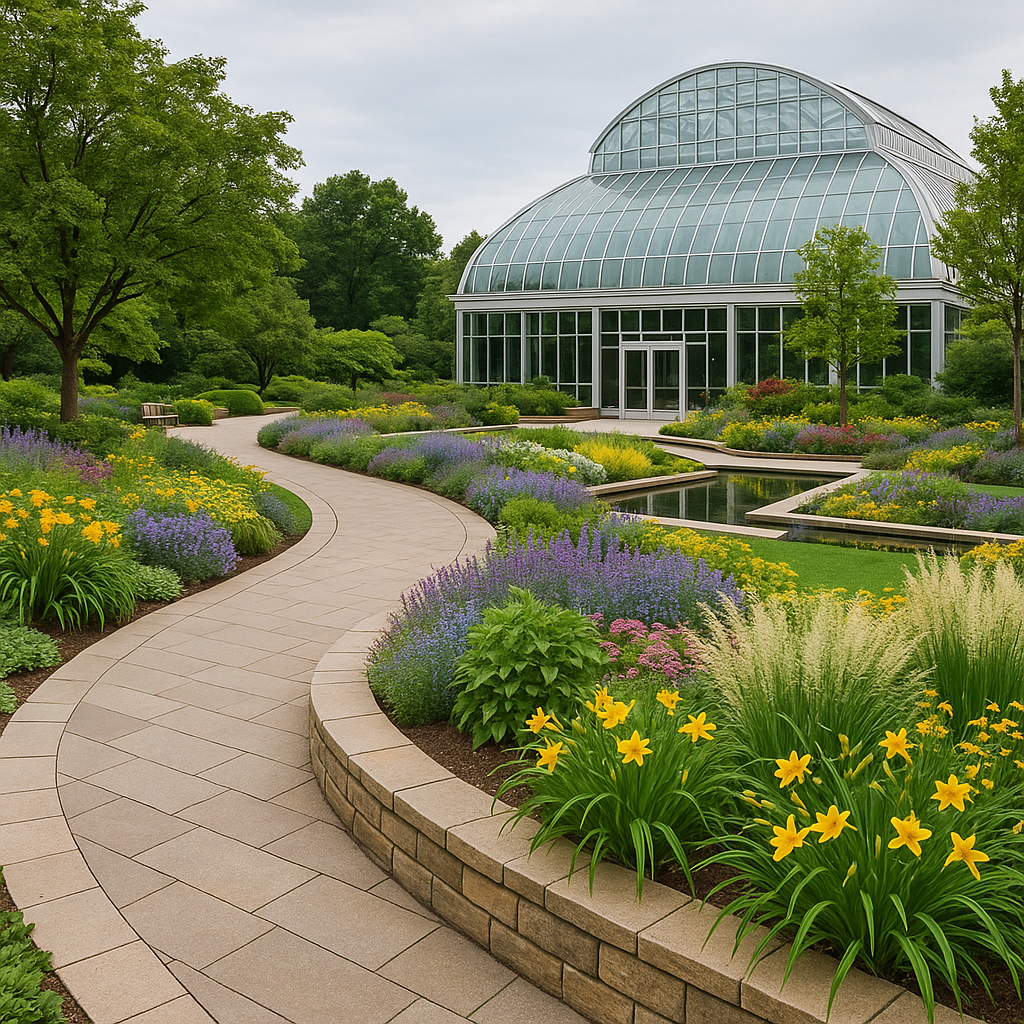When experts define landscape artistry in public gardens, they highlight a blend of creativity, ecological balance, and cultural storytelling. Public gardens are not merely collections of plants—they are curated spaces that invite communities to engage with nature, experience tranquility, and connect with cultural heritage. From grand botanical parks to intimate city gardens, the artistry lies in designing spaces that harmonize beauty with sustainability, accessibility, and purpose.
This article explores how landscape experts elevate public gardens through design flow, material choices, technology, and collaboration with planners, architects, and contractors.
The Meaning of Landscape Artistry
Landscape artistry refers to the intentional arrangement of natural and built elements to create experiences. In public gardens, this means combining flora, water features, walkways, and architecture into an integrated whole. To define landscape artistry is to recognize it as both an art and a science:
- Art: Expressed in color palettes, forms, textures, and focal points.
- Science: Grounded in ecology, soil health, climate, and sustainable maintenance.
Experts approach gardens as “living canvases,” balancing aesthetics with long-term environmental responsibility.
Flow and Movement in Public Gardens
Flow is central to garden artistry. Visitors should move seamlessly from one zone to another, guided by natural sightlines and intuitive pathways.
This principle mirrors residential design concepts, such as those detailed in Architects Define Landscape Flow in Residential Design. In public gardens, however, flow must accommodate larger crowds, diverse user needs, and accessibility for all.
Design strategies include:
- Curved pathways that encourage exploration.
- Open plazas for gathering and events.
- Layered planting that creates depth and rhythm.
Flow transforms a simple green space into a cohesive journey.
Material Choices for Durability and Expression
Materials in public gardens must withstand high foot traffic, weather extremes, and the test of time. But they also serve as design elements that shape the visitor’s experience.
- Stone walkways provide elegance and durability.
- Wood alternatives reduce maintenance while adding warmth.
- Recycled metals and eco-friendly paving add sustainability without sacrificing design.
Behind the scenes, advanced material handling ensures that heavy stones, sculptures, and glass installations are positioned safely and efficiently during construction. For larger features, tools like a Gantry Crane are indispensable, supporting both safety and precision in creating enduring garden artistry.
Public Gardens as Cultural Expressions
Every public garden tells a story. Experts often draw inspiration from:
- Local heritage: Using native plants and traditional patterns.
- Global styles: Japanese Zen gardens, French formal layouts, or English cottage designs.
- Community values: Spaces for wellness, education, and cultural events.
This cultural lens ensures that when experts define landscape artistry, they don’t just focus on beauty—they create identity and belonging.
Technology in Garden Artistry
Modern technology enhances how public gardens are designed, maintained, and experienced.
- Smart irrigation systems conserve water.
- Lighting solutions extend usability into the evening while creating ambiance.
- Digital mapping supports maintenance and biodiversity monitoring.
These innovations echo trends in Studios Define Landscape Innovation for Outdoor Living, where technology elevates outdoor spaces beyond traditional expectations.
Sustainability and Environmental Value
Sustainability is inseparable from public garden design. Experts define landscape artistry as responsible stewardship of ecosystems as much as creative expression.
Key strategies include:
- Planting native and drought-tolerant species.
- Using permeable paving to reduce runoff.
- Incorporating renewable energy features like solar lighting.
- Designing for pollinators and biodiversity.
In this way, artistry meets ecology, ensuring gardens thrive for future generations.
Collaboration in Large Garden Projects
Public gardens often require the combined expertise of multiple disciplines:
- Planners emphasize ecological value and urban integration, as explored in Planners Define Landscape Value in Sustainable Design.
- Contractors bring concepts to life, handling logistics, safety, and large-scale construction, such as those described in Contractors Define Landscape Roles in Large Development.
- Studios and architects inject innovation and ensure functional flow.
This collaboration ensures that public gardens are not just designed but sustained as living assets for the community.
Public Gardens as Extensions of Urban Living
In cities where green space is scarce, public gardens serve as communal living rooms. They extend indoor comforts—seating, lighting, and shelter—into outdoor environments. Just as private landscapes blur indoor-outdoor lines, public gardens create seamless integration between urban life and nature.
These spaces support wellness, socialization, and even education, making them invaluable parts of modern development.
Case Study: A Contemporary Urban Garden
Imagine a city transforming a vacant lot into a thriving public garden:
- Flow: A central path connects entry points, branching into curved walkways that guide visitors through themed zones.
- Materials: Stone benches, recycled metal sculptures, and eco-friendly decking create durability with style.
- Technology: Smart irrigation reduces water waste, while LED lighting enhances nighttime use.
- Construction: Heavy stone walls are installed using a Gantry Crane, while glass panels for a greenhouse require expert material handling.
- Sustainability: Native plants and pollinator-friendly gardens support biodiversity.
The result? A cultural landmark that unites art, ecology, and community.
The Future of Public Garden Artistry
As climate change, urbanization, and social needs evolve, so will public garden design. Experts predict:
- Greater emphasis on resilience against climate extremes.
- Integration of renewable energy and smart technologies.
- Expansion of multi-use gardens that serve as both ecological reserves and social hubs.
- Closer collaboration with architects, as seen in residential design and large developments.
This ensures that the artistry of public gardens continues to inspire while adapting to the challenges of tomorrow.
Conclusion
When experts define landscape artistry in public gardens, they emphasize more than aesthetics. They highlight flow, cultural storytelling, sustainability, and collaboration. With tools like advanced material handling and gantry cranes, modern technology, and eco-conscious planning, today’s public gardens are both works of art and vital community assets.
By weaving together artistry and responsibility, public gardens remind us that landscapes are not static—they are dynamic, evolving reflections of our collective values.
for more: Insulating Glass Unit Benefits for Energy Savings

